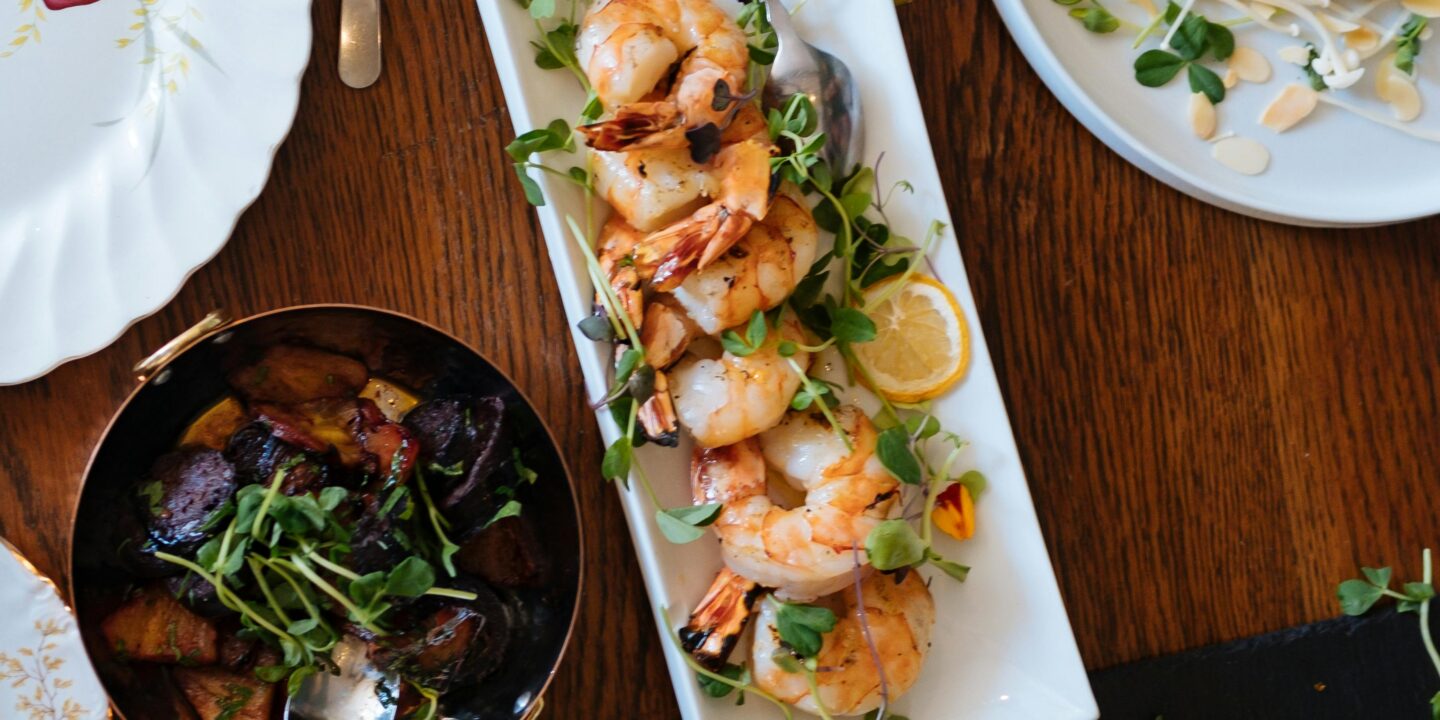
Food is more than just sustenance—it’s a powerful expression of culture, history, and identity. Across the globe, each region offers a distinct culinary narrative shaped by geography, climate, religion, and the intersection of different civilizations. To savor the world through food is to embark on a delicious journey that transcends borders and tells the story of humanity in all its flavorful diversity.
Let’s embark on a global culinary adventure, exploring iconic dishes, traditional cooking methods, and the cultural significance of food in various corners of the world.
1. Asia: A Tapestry of Taste
China: The Art of Balance
Chinese cuisine, one of the world’s oldest, is deeply rooted in the philosophy of balance—yin and yang, hot and cold, sweet and sour. With eight regional cuisines such as Sichuan (spicy and bold) and Cantonese (subtle and fresh), China offers endless variety. Staples like dumplings, Peking duck, and hot pot showcase techniques honed over millennia.
Highlight Dish: Xiaolongbao (Soup Dumplings)
Delicate dough wrappers filled with savory broth and pork, steamed to perfection—a symphony of flavor in a single bite.
Japan: Precision and Purity
Japanese cuisine emphasizes seasonality, presentation, and the natural flavors of ingredients. Dishes are often minimalist, with a focus on fresh seafood, rice, and fermented elements.
Highlight Dish: Sushi
Once a means of preserving fish in fermented rice, sushi has evolved into an art form. From simple nigiri to elaborate rolls, it’s all about quality and precision.
India: A Symphony of Spices
India’s food is a sensory explosion. With a vast spectrum of regional cuisines, from the rich gravies of the north to the coconut-laced dishes of the south, Indian food is deeply influenced by religion, tradition, and local produce.
Highlight Dish: Biryani
A layered rice dish infused with saffron, aromatic spices, and marinated meat or vegetables—each bite is a celebration.
2. The Middle East: A Rich Culinary Heritage
The Middle East is the cradle of civilization and home to a robust culinary tradition that emphasizes grains, legumes, herbs, and meats. Meals are communal and often accompanied by generous hospitality.
Highlight Dish: Mezze
A spread of small dishes like hummus, baba ghanoush, tabbouleh, and falafel—perfect for sharing and grazing.
Cultural Insight: Bread, particularly flatbreads like pita or lavash, is revered in many Middle Eastern cultures. It’s more than food—it’s symbolic, sometimes even sacred.
3. Africa: Diversity on a Plate
Africa’s food culture is as varied as its landscapes. With thousands of ethnic groups across 54 countries, African cuisine defies simple categorization.
North Africa: Spice Markets and Slow Cooking
Countries like Morocco and Tunisia are known for spice-heavy dishes and slow-cooked stews.
Highlight Dish: Tagine
A fragrant stew cooked in a conical earthenware pot, combining meats, dried fruits, nuts, and spices like cinnamon, cumin, and saffron.
West Africa: Hearty and Flavorful
In West Africa, dishes often include root vegetables, leafy greens, and bold sauces. Groundnut (peanut) stews, jollof rice, and fufu are staples.
Highlight Dish: Jollof Rice
A tomato-based rice dish seasoned with chili, garlic, onion, and local spices. It’s a point of pride and friendly rivalry between countries like Nigeria and Ghana.
East Africa: A Fusion of Influences
East Africa’s cuisine reflects indigenous traditions and historical trade with Arabs, Indians, and Europeans.
Highlight Dish: Injera with Wat (Ethiopia)
Injera, a spongy sourdough flatbread made from teff, is served with richly spiced stews (wat). Meals are communal, eaten with the hands.
4. Europe: Old-World Sophistication
Europe is a continent of culinary refinement, where tradition meets innovation.
Italy: Simplicity and Passion
Italian cuisine is defined by its focus on fresh ingredients, regional pride, and culinary craftsmanship. From pasta to espresso, Italy romanticizes the act of eating.
Highlight Dish: Risotto alla Milanese
Creamy arborio rice slowly stirred with saffron and broth—a luxurious northern Italian specialty.
France: Haute Cuisine and Elegance
French cuisine has set the global standard for fine dining. Known for sauces, pastries, and precision, it ranges from rustic farmhouse fare to intricate multi-course meals.
Highlight Dish: Coq au Vin
Chicken braised with wine, mushrooms, and herbs—simple ingredients elevated to sophistication.
Spain: Tapas and Tradition
Spanish food emphasizes bold flavors and social dining. From the Mediterranean coast to the Iberian hills, dishes celebrate both sea and land.
Highlight Dish: Paella
A vibrant rice dish often made with seafood, saffron, and green vegetables. Born in Valencia, it symbolizes communal eating and festive gatherings.
Greece: From Land and Sea
Greek cuisine is tied to the seasons and shaped by olive oil, grains, fresh herbs, and seafood. It’s Mediterranean living at its best.
Highlight Dish: Moussaka
Layers of eggplant, ground meat, and béchamel sauce baked to golden perfection—comfort food with ancient roots.
5. Latin America: Flavor, Color, and Celebration
Latin American food is vibrant and diverse, shaped by Indigenous ingredients, colonial history, and African influences.
Mexico: Soulful and Spicy
Mexican cuisine is rich in history and flavor. With corn, beans, and chili as its holy trinity, every dish tells a story.
Highlight Dish: Mole Poblano
A complex sauce made with chili peppers, chocolate, spices, and nuts—traditionally served over turkey or chicken.
Peru: An Emerging Star
Peruvian food is gaining international acclaim. It’s a fusion of Indigenous, Spanish, African, and Asian flavors.
Highlight Dish: Ceviche
Raw fish marinated in citrus juice with onions, cilantro, and chili—fresh, zesty, and refreshing.
Brazil: A Melting Pot
Brazil’s food reflects its multicultural heritage—Portuguese, African, Indigenous, and more.
Highlight Dish: Feijoada
A hearty black bean and pork stew, traditionally served with rice, collard greens, and orange slices.
6. North America: Innovation and Fusion
North America is a culinary melting pot. Immigration has turned cities like New York, Toronto, and Los Angeles into food capitals of the world.
United States: Regional Variety
American cuisine blends indigenous ingredients, immigrant traditions, and innovation. From Southern BBQ to New England clam chowder, it’s all about bold, comforting flavors.
Highlight Dish: Gumbo (Louisiana)
A rich stew with African, French, and Native American influences—often made with seafood, sausage, and okra.
Canada: Understated Yet Rich
Canada’s food scene reflects its French, British, and Indigenous roots. From coast to coast, you’ll find seafood, game meats, and maple-sweetened dishes.
Highlight Dish: Poutine
French fries topped with cheese curds and smothered in gravy—a deliciously indulgent Canadian classic.
7. Oceania: Fresh and Foraged
In Australia and New Zealand, cuisine reflects a love of the outdoors, indigenous foods, and global flavors.
Australia: Indigenous Meets Modern
Modern Australian cuisine blends native ingredients with Asian and European techniques.
Highlight Dish: Barramundi with Lemon Myrtle
Barramundi, a native fish, cooked with indigenous herbs—light, clean, and quintessentially Australian.
Polynesia and Pacific Islands: Island Simplicity
Traditional food revolves around fresh seafood, root vegetables, and coconut.
Highlight Dish: Poisson Cru (Tahiti)
Raw fish marinated in lime juice and coconut milk, often served with vegetables. It’s light, creamy, and tropical.
The Cultural Significance of Food
1. Food as Identity
Cuisines are deeply intertwined with identity. They preserve traditions, tell stories, and link generations. For immigrants, food becomes a taste of home and a way to hold onto heritage.
2. Food as Ritual
In many cultures, meals mark important life events—births, marriages, funerals. Religious observances like Ramadan, Passover, or Lent are defined by fasting and feasting. Food rituals foster community and continuity.
3. Food as Diplomacy
Culinary diplomacy is real. Governments have used food as a soft-power tool, from sushi diplomacy in Japan to culinary exchanges at international summits. Sharing a meal can open doors diplomacy alone cannot.
The Future of Global Cuisine
As globalization brings us closer, culinary cross-pollination is inevitable. Korean tacos, sushi burritos, and vegan biryani are becoming the norm. However, there’s also a resurgence in hyper-local and indigenous food movements that celebrate authenticity, sustainability, and heritage.
Technology is changing the way we cook and eat. From lab-grown meat to AI-powered recipe platforms, the future is exciting—but the roots of cuisine will always lie in tradition, community, and the human connection to food.
Conclusion: A World Worth Tasting
To explore the world through its food is to taste history, geography, emotion, and culture in every bite. Each dish is a story—a memory passed down through generations. Whether you’re savoring a Moroccan tagine under the stars, enjoying street tacos in Mexico City, or eating sushi at a Tokyo market, food connects us.
So, grab a fork (or chopsticks or your hands) and dig in. The world is full of flavor, waiting to be explored—one dish at a time.





















